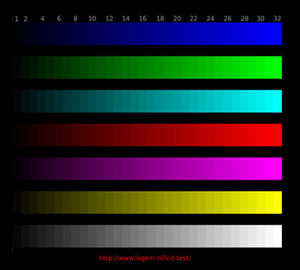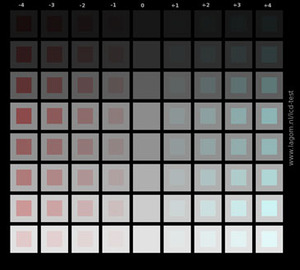
Objective Image Quality
There is a wide range of image quality testing applications and resources available today. One of our current favourites can be found over at Lagom. Detailed tests for everything from colour gradients to gamma calibration and pixel response are included along with a detailed guide to interpreting what you are seeing.Running the VLED221wm through this fairly standardised image quality test suite, it's immediately obvious that it does little to distance itself from typical TN monitors. As ever, there's precious little contrast to be had in both bright white tones and at the top end of the colour scales.
At default settings, there is more detail and contrast when rendering darker colours. But much of that goes up in smoke once the gamma settings have been tweaked to dial out the VLED221wm's inherent lack of punch and depth. Again, that's nothing unusual for a TN monitor, but it is worth noting that the LED backlight does nothing to offset these typical TN imbalances.
Nor does it help with black levels, which are pretty ordinary. The LED backlight leaks through in much the same way as a CCFL tube. In that regard, LED technology is no substitute for the inkier blacks produced by a good PVA panel. There's some evidence of backlight bleed along the top and bottom edges of the panel, too.
It's also a little disappointing to note that white tones are not demonstrably cleaner or purer than a conventional CCFL monitor with a TN panel. Nor is there much evidence of improved colour accuracy. Like any TN screen, the VLED221wm's fundamental colour balance is frankly a little wonky.
What's more, some banding is visible in colour gradients and upon close inspection, it's just possible to see the “fizz” of pixels being rapidly changed between colour states. That's a product of the dithering technology used to lift what is essentially a 6-bit panel up to 8-bit status.
While that may not be a major surprise, the relatively poor pixel response probably is. Given the TN technology and 5ms rating, the significant flashing visible in the Lagom pixel response test has to count as something of a failure. After all, fast pixel response is the one thing TN panels usually do well.

MSI MPG Velox 100R Chassis Review
October 14 2021 | 15:04












Want to comment? Please log in.